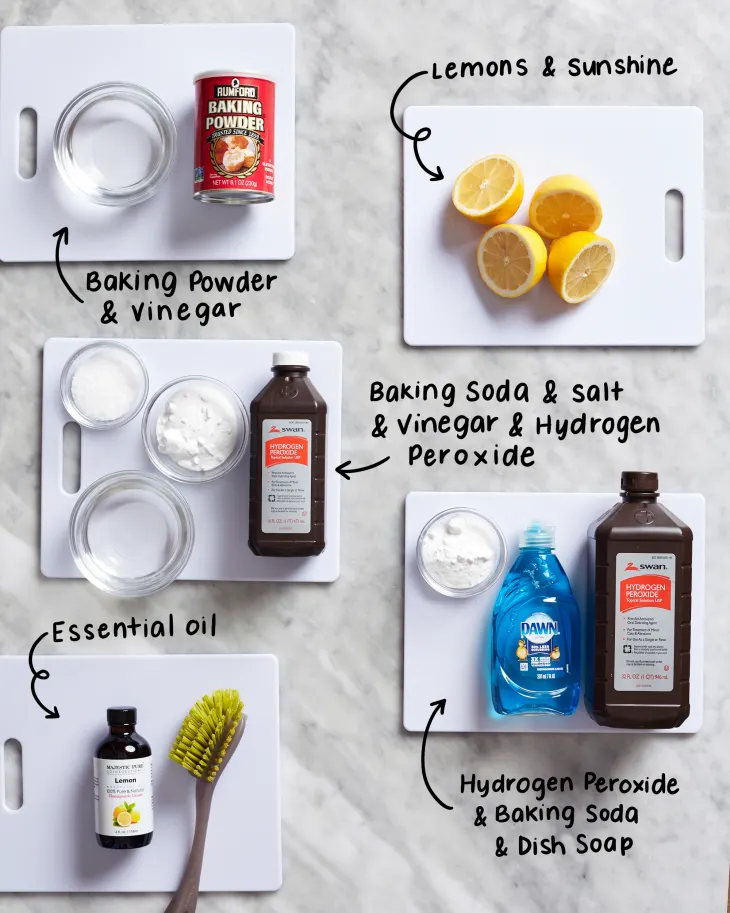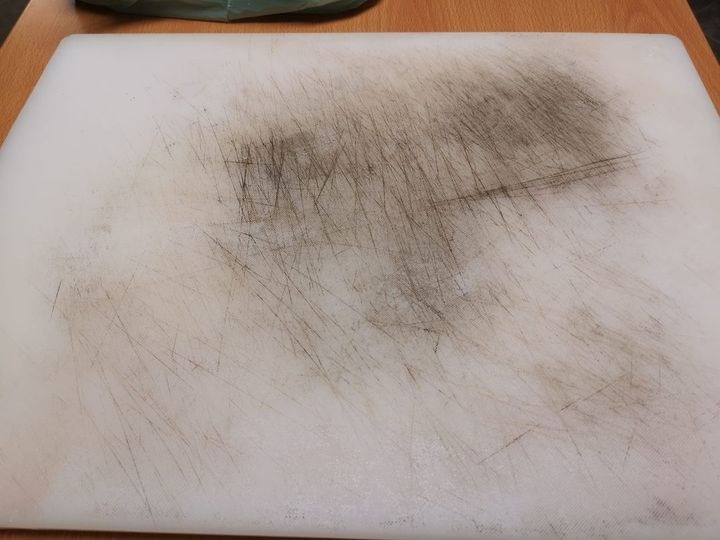
How I Experimented with Various Approaches
I quickly combined turmeric and water to make a paste, which I then spread over five separate cutting boards. (I had previously used this combination as a natural fabric dye and had seen how fast the gorgeous color stained or transferred to every surface it came into touch with.) For every cutting board, I used this as my control.
Each approach was rated on a scale of one to five, where five was the greatest overall method and one was the least preferred. I’ve included some observations about the method’s simplicity of use, the amount of elbow grease required, and removal time in addition to the grade.
Cleaning of Cutting Boards Method: White vinegar and baking powder
Ten minutes in total
Evaluation: 1 out of 5
The approach: Make a paste by combining equal parts white vinegar and baking powder. After applying the paste to the stain, let it be there for at least five minutes. Next, use a sponge dipped in soapy water to wash.
This is what transpired: I was curious as to why baking powder would be used for cleaning rather than baking soda, and I was taken aback to discover that baking powder is essentially baking soda mixed with an acidic substance. I had great expectations because I’ve cleaned a lot of items with the reliable baking soda/vinegar mix, but this approach did not work for me.
Cleaning of Cutting Boards Method: Water, vinegar, and essential oil
Five minutes in total
Evaluation: 2 out of 5.
The approach: One cup of water, half a cup of distilled white vinegar, and five to eight drops of high-grade essential oil (I chose Thieves oil) should all be combined in a spray bottle. Shake, saturate the board with the solution, and then use a stiff-bristle brush to scrub. Use dish detergent to give it a thorough wash.
What happened was that it took me longer to mix all the components than it did to realize that this wasn’t going to work.I sprayed the entire board and then started scrubbing the mixture with a stiff-bristle brush, but nothing came of it. I could see pieces of turmeric causing the soap bubbles to become yellow as soon as I added dish soap. Regarding This combination works well as a substitute for bleach in terms of disinfection, however, it is ineffective against stains.
Method for Cleaning Cutting Boards: Lemon and Sunlight
Time in total: one day
Three out of five
The procedure is to split a lemon in half and massage the juice out while scrubbing the soiled cutting board. After that, take the board outdoors and let it in the sun to bake for the whole day.
How it happened: The discoloration was still clearly visible after having slightly lifted. Since the sun is a fantastic bleaching agent, I can assume that if you were to repeat this method and keep the cutting board in the sun for a few days at a time, the results would be much better.
Method for Cleaning Cutting Boards: Dish soap, baking soda, and hydrogen peroxide
Time in total: Overnight
4.5 out of 5
The approach: Combine 1 tablespoon dish soap (I used Dawn), 3 to 4 teaspoons baking soda, and 1 to 2 tablespoons hydrogen peroxide in a small basin. After applying the mixture on the stain, leave it overnight. Use warm, soapy water to rinse and scrub.
How it happened: By morning, the combination had brought some of the stain’s color to the surface. When I used warm water to rinse the mixture off, I was happy to notice that the stain had greatly lessened. Even more of the discoloration emerged when I cleaned everything with dish soap. Though it didn’t surface fully, it was unquestionably a successful technique for removing a stain this difficult. To be honest, I think there should be a tie between this strategy and the one that comes next (below).
Cleaning Technique for Cutting Boards: Hydrogen peroxide, vinegar, salt, and baking soda
Ten minutes in total
Evaluation: 4.5 out of 5
The procedure: Kitchen has a tried-and-true procedure that involves two distinct procedures that may be completed at any time. The board should first be soaked in a solution of white vinegar or sprayed with a solution of 3% hydrogen peroxide. (In any case, give the board a minimum of five minutes to settle before giving it another wash with soap and water.) Next, combine one part water, one part salt, and one part baking soda to create a paste that will remove surface stains.
How it went: Sure, a lot of materials are needed for this, but most of us probably already have them on hand. The fact that there were two processes was a plus since, depending on how stained your board is, you may choose to soak or not. In the end, the scrub mixture has the ideal consistency—it’s not soupy, but it’s thin enough to spread out over the discolored cutting board. When applying baking soda on a stain, I typically know what to anticipate: the stain will gradually fade with a little elbow work. I’m glad to say that this required a little less work than I had anticipated.
When your plastic cutting boards are very discolored, how can you clean them?
